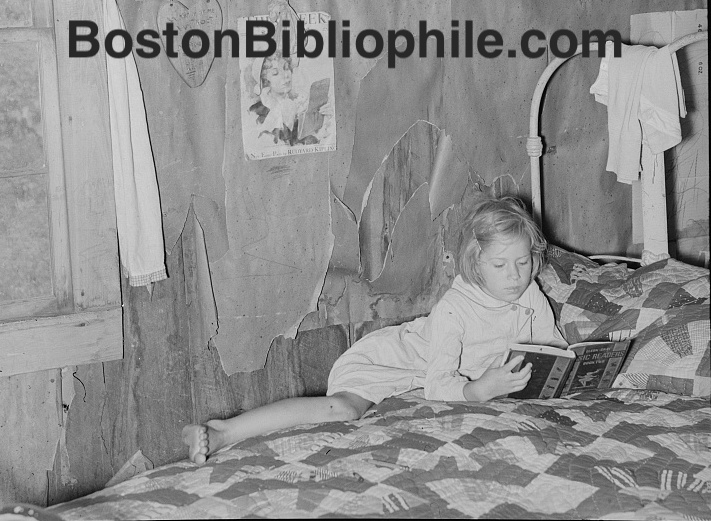The Book Thief, by Markus
Zusak. Published: 2005 by Random House. Literary Fiction. Young Adult.
 The Book Thief
The Book Thief, by Australian writer Markus
Zusak, is going to be a tricky book for me to review because I'm not sure what I can say that hasn't already been said. On the back cover it appears that the list of awards it's won is almost longer than the plot summary-
The Book Thief has been lauded by everyone from the American Library Association to
Publisher's Weekly to Book Sense, and that list doesn't include everything.
The Book Thief also won a Sydney Taylor Book Award from the Association of Jewish Libraries and has been used in at least a few One Book programs across the country and it seems to me that I can't open a library journal without seeing that
Zusak is somewhere accepting laurels.
I was also a little nervous about reading
The Book Thief, since I tend to be a little on the
contrarian side. If everyone else liked it, there would be a pretty good chance I wouldn't. Not this time, though. I loved it. Let me repeat: I loved it. It's a beautiful, compelling novel about the power of love (and reading) to help and heal.
Narrated by the figure of Death
, The Book Thief is the story of little
Liesel Meminger, a young girl orphaned in Germany during World War II, who goes to a Munich suburb to live with a couple named Rosa and Hans
Hubermann, whose own children are grown. Rosa, a professional laundress, is frosty and difficult on the surface, but Hans shows himself to be a warm father to the scared little girl and she begins to blossom under his care, as, among other things, he teaches her to read. The story mixes a coming-of-age plot focused on
Liesel and her best friend, Rudy Steiner, with the ever-present and ever-growing hostile atmosphere of Nazi Germany.
Liesel also develops a crucial relationship with one of Rosa's customers, who helps nurture
Liesel's passion for books. There are twists and turns right up to the end as Hitler's grip tightens on Germany and the family and though some twists are given away by the grim narrator, there are plenty of bittersweet surprises all the way through.
The book starts off a little slow but picks up steam rapidly; once it gets going, it's absolutely
un-put-down-able.
Liesel and all the characters are beautifully drawn with believable dialogue and tender, human relationships.
Zusak displays remarkable control throughout- during some of the really grim and heart-rending passages, such as when groups of Jewish concentration camp prisoners are paraded through town, he uses a firm, deft hand to convey the characters' feelings without going over the top or being melodramatic. When the story takes a couple of surprising turns, they feel real and justified by the characters' personalities. Justice, such as it is, is meted out with the haphazard randomness of real life- nobody escapes unscathed, in body or in mind, and you can't take anything for granted. It's a very, very good read.
The Book Thief is an interesting example of how marketing can impact a book's audience. In Australia Markus
Zusak is generally considered an author of books for adults and
The Book Thief was marketed to adults there, and the heavy subject matter of Nazi Germany and Holocaust warrants that classification. In the United States, I understand that
Zusak has a solid reputation as a writer for teenagers, and it was in the young-adult section of my local bookstore where I found the book. That classification is also justified because the writing, while well-done, is not done at a high degree of difficulty, the story centers on a
pre-teen girl, most of the violence takes place off-stage and death is presented as inevitable but gentle. In a way it's too bad that it hasn't been marketed more to adults in the U.S. because I think a lot of people may miss out on a great read because they think it's a kid's book. On the other hand, it also has a great deal of potential for a teenage audience. So what to do?
Zusak said once in an interview (and I paraphrase) that when he sits down to write, his goal is not to write an adult book or a young adult book, but to write
someone's favorite book. I think for a lot of readers he has (and will have) succeeded admirably with
The Book Thief.
Rating: BUY
FTC Disclosure: I did not receive this book for review from the publisher.
 the cover to buy from your local Book Sense-affiliated independent bookseller.
the cover to buy from your local Book Sense-affiliated independent bookseller. I got Fantasies of a Bollywood Love Thief as a gift, and having only seen two Bollywood films I'm definitely a newcomer to those phenomenally successful and popular movie musicals from India. The book is about the making of the film "Omkara," a remake of Shakespeare's Othello; author Stephen Alter, a writer and former MIT writing professor who lives and works in India, is probably as good a guide as any to this colorful world.
I got Fantasies of a Bollywood Love Thief as a gift, and having only seen two Bollywood films I'm definitely a newcomer to those phenomenally successful and popular movie musicals from India. The book is about the making of the film "Omkara," a remake of Shakespeare's Othello; author Stephen Alter, a writer and former MIT writing professor who lives and works in India, is probably as good a guide as any to this colorful world.








